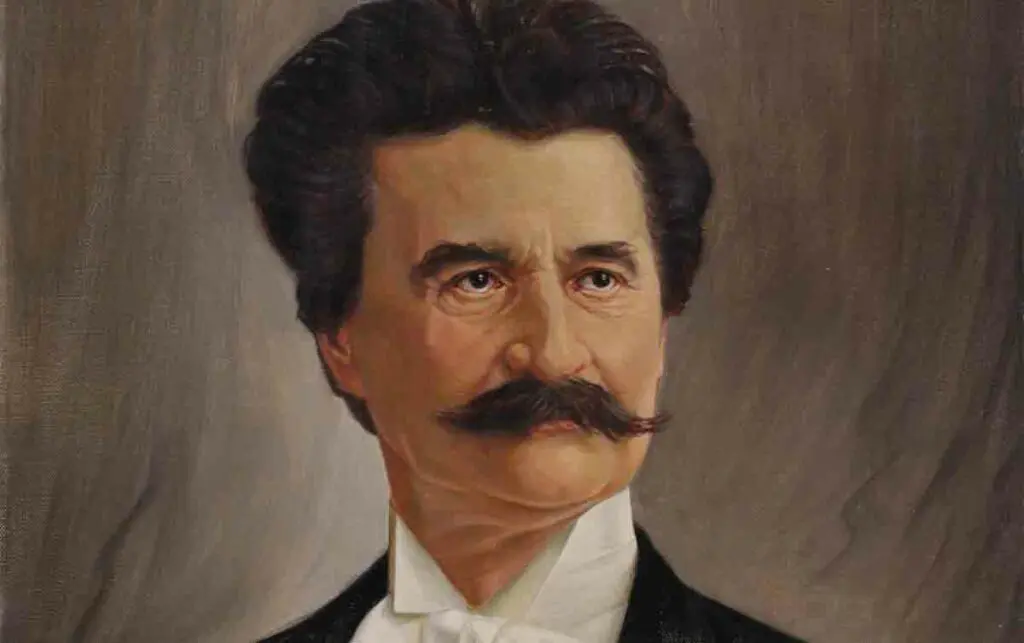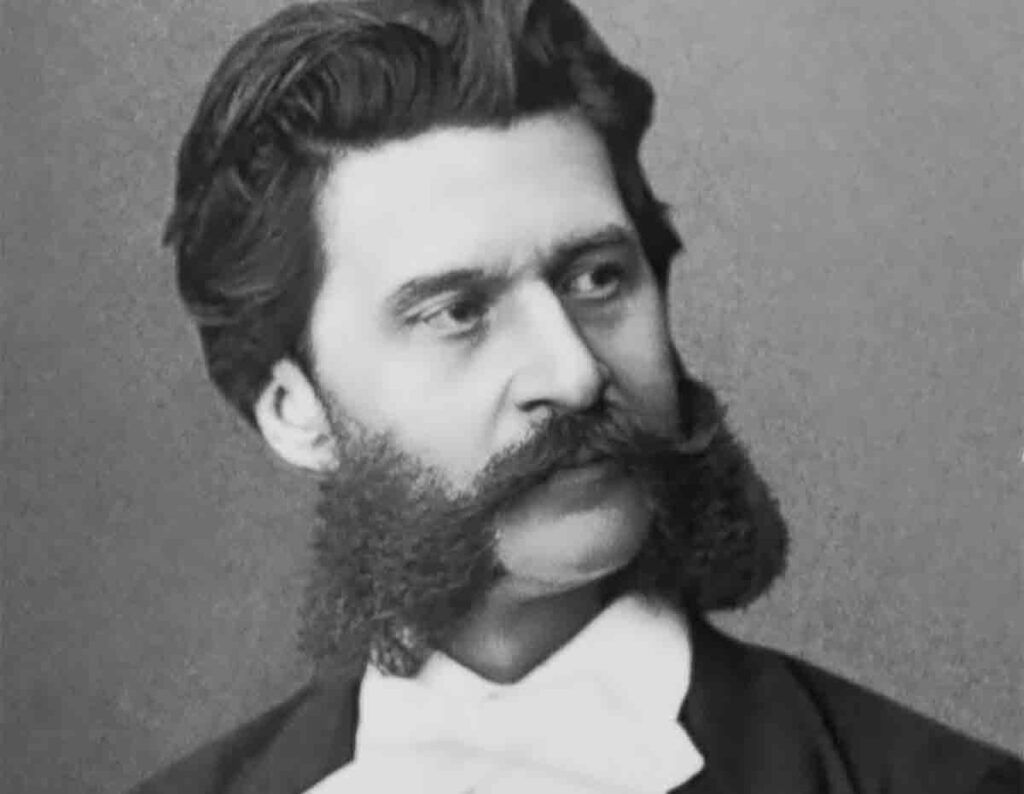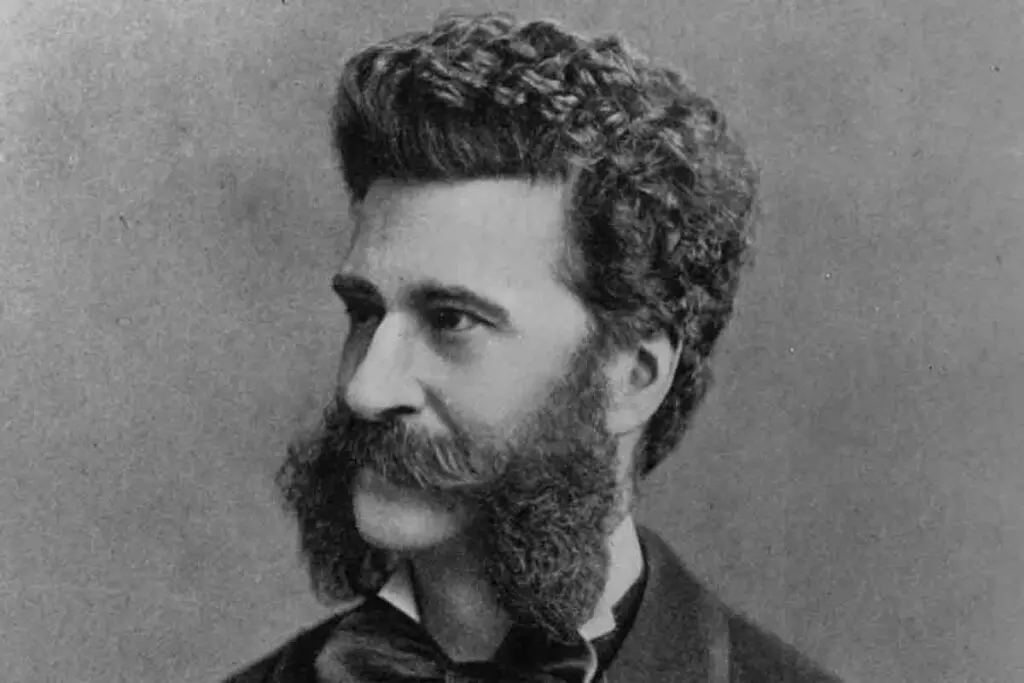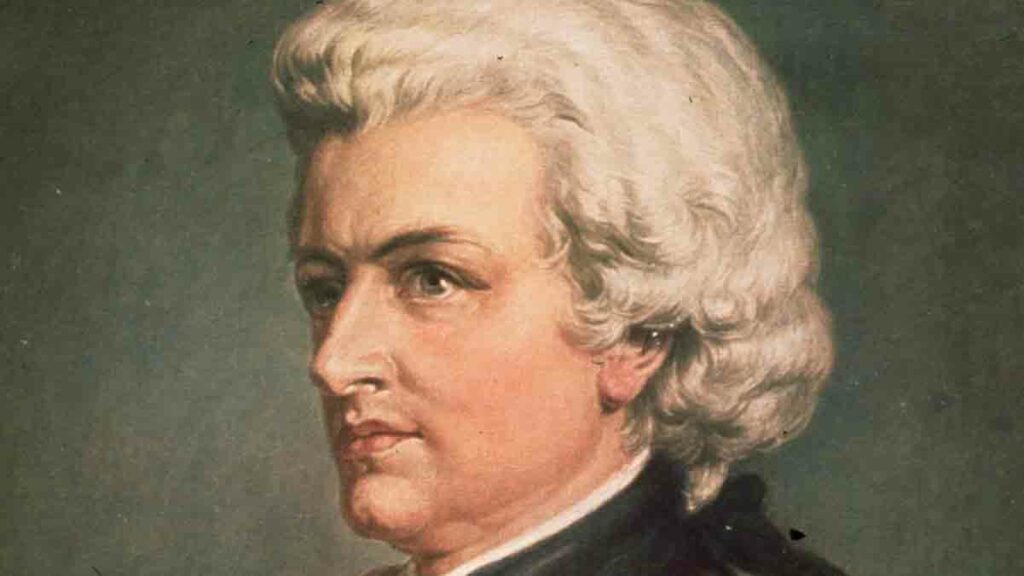At the time when Johann Strauss was born, classical dance music was considered a frivolous genre. Such compositions were treated with derision. Strauss managed to change the consciousness of society. The talented composer, conductor and musician is today called the “king of the waltz”. And even in the popular TV series based on the novel "The Master and Margarita" you can hear the bewitching music of the composition "Spring Voices".

Johann Strauss: Detstvo и youth
When we are talking about Strauss, it becomes unclear who exactly we are talking about. The fact is that Strauss is a real dynasty of talented musicians and composers. Johann inherited his talent from the head of the family.
The head of the family was a talented violinist and conductor. He also played the waltz brilliantly. His rehearsals were often held at home, and he was not at all opposed to the fact that the children tried to imitate his musical skills.
When Johann grew up, the strict dad saw in his son no less than a banker. He even banned Strauss Jr. from making music. Now all rehearsals were held in secret from the head of the family. But my mother managed to insist that the children be free to play the piano and sing in the church choir.
The talented young man learned to play the violin from Franz Amon himself. The father did not want to let his son go to the musical field. He wanted a more serious profession for Strauss. He had no choice but to grant his father's request. Soon he became a student at the Polytechnic School. Johann received an economic education, which later came in handy.
Popularity
On the wave of popularity, the aspiring musician created several orchestras that actively performed with concerts in his native city. After conducting just one composition, he moved to another place. He simultaneously satisfied the desire of the public to hear a brilliant performance and increased his income.
When Johann honed his skills to the level of a professional, he became a full-fledged competitor to his father. The head of the family was so worried about his reputation that he tried to keep his son within four walls by force. Johann was supported only by his mother. For the sake of Strauss Jr.'s career, she divorced her husband. At that time, they no longer had a full-fledged family, since Strauss Sr. lived in two houses. The father deprived his own children of the right to inherit.
Father and son did not have the same views on the adoption of revolutionary trends. So, the head of the family without hesitation was for the Habsburgs. Johann wrote the March of the Insurgents. Today, the presented composition is known to fans of classical music as the "Viennese Marseillaise". When the uprising was crushed, Johann Jr. was put on trial. Father rejoiced until he realized that the audience met him very coldly. He was no longer a popular musician. The audience wanted to see the young Strauss.
Surprisingly, after the death of his father, the creative career of the famous composer began to flourish. Johann tried not to be offended by the head of the family. He dedicated several musical compositions to him.
The creative path and music of the composer Johann Strauss
A year after coming of age, Johann acquired his own orchestra, with which he successfully toured the country. The first performance of the musicians did not take place in the most suitable place for classical compositions. An orchestra led by Strauss performed at the casino. Again, the father was involved here, who took advantage of his connections so that his son would not get good playgrounds. He blocked his entrance to all palaces and salons.
Johann's position improved after the death of his father. Then the musician united the orchestras, even began to perform in the Franz Josef Palace. He led the orchestra, whose musicians enthusiastically played polkas and waltzes of the maestro's own composition. Sometimes he allowed the rich creative heritage of Strauss Sr. to be included in the repertoire.

Johann's popularity increased. He became one of the most important musicians of that time. Strauss was not greedy for fame. He shared his popularity with his brothers - Eduard and Josef. He focused on the fact that he considers himself a popular genius, and his brothers are simply talented musicians.
Soon, Johann Strauss was known not only in his native Austria. With the increase in popularity, it covered even more sites in different parts of the world. The musician with his orchestra performed in the Czech Republic, Poland and Russia. He was gifted. He did not need to make significant efforts during the creation of compositions. Music just "flowed from his pen."
Austrian composer - the founder of the Viennese waltz. Melodic musical compositions consist of an introduction, 4–5 melodic constructions and a conclusion. Interestingly, the famous composer wrote over 150 brilliant waltzes. It is simply impossible to underestimate his contribution to the development of classical music.
The best works
The most popular compositions of the talented maestro are Tales from the Vienna Woods and On the Beautiful Blue Danube. Interestingly, the last composition was popularly called "The Blue Danube". For the first time the melody sounded at the World Exhibition in the capital of France. Today, the composition is considered to be the unofficial anthem of Austria.
In addition, among the popular Strauss waltzes are "Voices of Spring". The composition was performed for the first time at the Theater an der Wien. The most interesting thing is that the Spring Voices waltz can be heard at modern events. For example, in European countries, the composition is listened to during the celebration of the New Year.
On the basis of immortal compositions, the maestro today creates ballets. Strauss' compositions are not only music for social events. Experts are sure that his compositions should be considered as original compositions of high artistic value.
In the 1970s, Johann began writing operettas. Strauss created a separate classical genre. There were more than 10 of them, as well as ballet and comic opera. It is a great honor for accomplished and beginning artists to perform parts from the operettas The Bat or The Gypsy Baron.
Soon the composer, musician and conductor visited the United States of America. He managed to hold 14 concerts. In addition, he set a record. The fact is that Strauss conducted an orchestra, which included 1 thousand musicians. This trip cost him the deprivation of the contract and a large sum of money.

Personal life of maestro Johann Strauss
The maestro visited the Russian Federation several times with his concerts. It was there that he met a beautiful girl, whose name was Olga Smirnitskaya. The composer fell in love with her and asked to marry him. Parents opposed this union. They categorically did not want their daughter to leave their native country. Strauss dedicated the composition "Farewell to St. Petersburg" to his muse.
When the maestro found out that his beloved was getting married, he could not find a place for himself for a long time. Strauss found peace of mind in the arms of Henrietta Chalupetskaya. The woman had a very interesting biography. She gave birth to seven children from different men, while not one of them was honored to take her as an official wife. For Johann, she became a muse. The composer was inspired by the beauty of the opera singer.
The woman died soon after. Strauss did not grieve for long. He did not burden himself with the obligation to endure the prescribed mourning and married Angelica Dietrich. The couple broke up five years later.
The last wife of the maestro was a beauty named Adele Deutsch. She lost her husband and inherited a significant amount of money. For the sake of his Jewish wife, the maestro even changed his faith. Interestingly, he never had children in any of his marriages.
After the death of Strauss, the last wife tried to perpetuate the memory of the maestro. In the house where the family lived, the widow created a museum. There one could see the musical instruments the composer played, get acquainted with his habits and study the general atmosphere.
Interesting facts about Strauss
- He wrote over 450 compositions.
- He wrote his debut composition "First Thought" at the age of 6.
- Johann wrote the quadrille "Nikolai" in honor of the Russian emperor.
- The name of the composer is associated with the king of waltzes, a symbol of carefree youth and romantic love.
- There are monuments to Strauss in Australia, Russia and Pavlovsk.
The last years of the composer's life
Strauss in the last years of his life tried to avoid social events. He led a reclusive life. At that time, he could only be seen at one concert - in honor of the creation of the operetta "The Bat". It later turned out that this was the wrong decision. After the concert, the maestro fell ill.
He was given a disappointing diagnosis of pneumonia. He didn't have a chance to live. Strauss left this world in June 1899. He is buried in the Vienna Central Cemetery.



